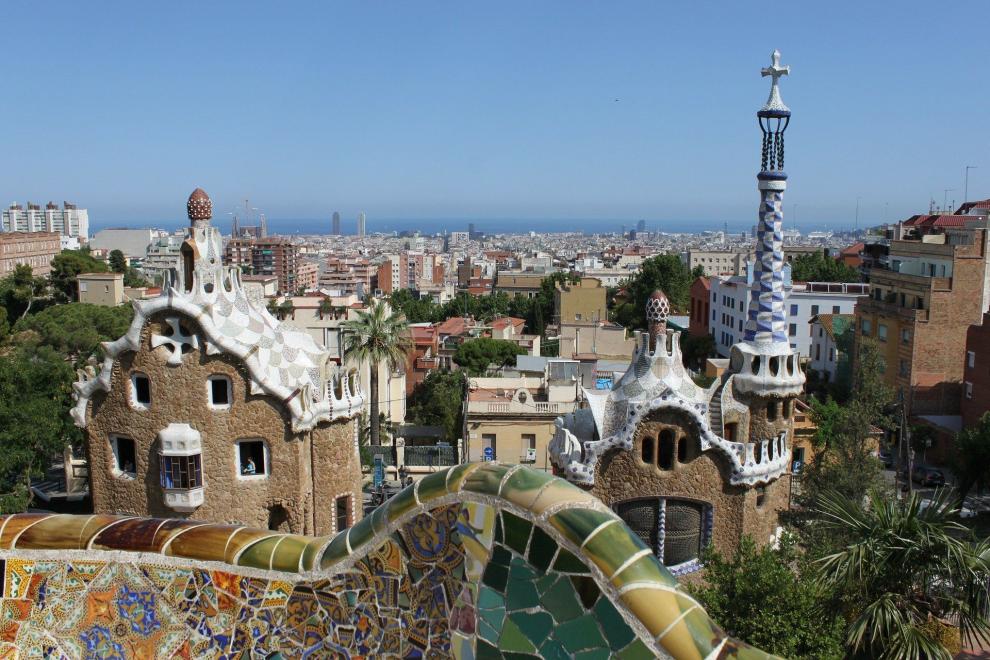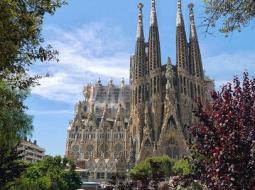Thessaloniki gets ready for its metro launch in November
The underground rapid transit lines have been under construction for almost two decades due to various project delays
 TheMayor.EU logo
TheMayor.EU logo 
The first traces of human settlement in Barcelona date back to the Neolithic period. At the end of the 1st century BC Romans set up a colony called Barcino, which is viewed as a predecessor of the city. Remains of the colony’s defensive wall can still be seen in the old town of Barcelona.
Muslim rule left its mark on the city for over 200 years. Following the Christian reconquest, Barcelona became a county of the Carolingian Empire and the Crown of Aragon set up one of its main residences there. The medieval period saw Barcelona cement its position as the economic and political hub of the Western Mediterranean.
From the 15th to 18th centuries Barcelona struggled to maintain its economic and political independence but fell into decline. In 1714 the city surrendered to the French Bourbon troops and lost its rights and privileges with the rest of Catalonia.
The textile industry upsurge in the mid-19th century ushered in a period of cultural recovery. During that time known as the Renaixença, Catalan regained prominence as a literary language.
The 20th century brought widespread urban renewal throughout Barcelona city. Many buildings, especially in the Eixample district, were executed in Catalan art-nouveau, or modernista style. Catalan architect Antoni Gaudí, who took inspiration from God and nature for his visionary creations, designed landmark buildings such as the Casa Mila (aka La Pedrera), the Casa Battlo and the otherworldly Sagrada Familia cathedral, which should be completed in 2026.
The freedoms achieved during this period were severely curbed during the dictatorship of Gen. Francisco Franco following the Republican defeat in the Spanish Civil War (1936-1939). With the restoration of democracy in 1978, Barcelona society regained its economic strength and the Catalan language was reintroduced alongside Spanish.
Barcelona reaffirmed its status as a major metropolis with the 1992 Olympic Games hosted by the city.
Barcelona is the second most populous municipality in Spain with over 1,6 million people living in its urban area and about 4.7 million in the Province of Barcelona.
As the capital of the autonomous region of Catalonia, Barcelona is the seat of the Catalan government, known as the Generalitat de Catalunya, the Catalan parliament and the High Court of Justice of Catalonia.
Barcelona is governed by a City Council. The body is formed by 41 councillors, elected by universal suffrage for a four-year term.
Barcelona is the principal commercial and industrial center of Spain and its largest port due to the city’s strategic location - on the Mediterranean Sea, near the border with France.
Both heavy (iron, steel, copper) and light industry (textiles, handicrafts) are well represented with a focus on electrical engineering, shipbuilding, publishing, and the production of transport vehicles like automobiles, locomotives and airplanes, as well as of wine and consumer goods. Barcelona accounts for more than a quarter of Spain's GDP.
Barcelona is also an international banking and finance hub and ground for prestigious international trade fairs. Gaining importance in the late 1950s, tourism has become a mainstay of Barcelona industry, with the city struggling to control the heavy tourist influx.
Barcelona is a continental leader in terms of FDI strategy and policies for attracting investors, according to a recent Financial Times report.

Many recreational areas, some of the best beaches, warm climate and rich history, plus eight UNESCO World Heritage Sites are just some of the reasons that draw millions of tourists every year to the city.
Naysayers claim, however, that without its Gaudi heritage Barcelona would have been just a more pompous Madrid with a sea. This is far from the truth but visiting the awe-inspiring legacy of Gaudi’s architectural genius is a top priority. The intricately constructed and ornamented buildings of Casa Batlló and La Pedrera are easily accessible on foot along the central Passeig de Gràcia boulevard, while getting to the fantastic Sagrada Família requires a short metro ride. You can continue on the metro or bus to the Park Güell, a fairytale place designed by Gaudi himself.
Upon climbing Montjuïc Hill, or getting up there by the Funicular, a cluster of attractions is in store for you: the Fundació Miró (museum of Catalan surrealist artist Juan Miro), the Olympic Ring and the Poble Espanyol (featuring replicas of iconic buildings from all over Spain). Descending the steps from the imposing National Museum of Art of Catalunya you may find yourself at "The Magic Fountain of Montjuïc" - a nighttime light, music and water display that is a feast for the senses.
Stroll down to the sea and take pictures of the Columbus Monument, or take the lift to the top of it to enjoy splendid views of Barcelona, its port and its famous pedestrian street La Rambla. If you are a soccer fan, then the FC Barcelona stadium & museum is a must-visit. The huge Barcelona Aquarium provides unforgettable encounters with 11,000 marine animals from 450 species even for soccer fans.
Barcelona is also the perfect outpost for ferry rides (to the Balearic Islands etc.) and daytrips to the picturesque Catalan coastal villages. Just 35 kilometers south of Barcelona lies Sitges, famed for its blue flag-awarded beaches, vibrant night-life and (gay)friendly atmosphere.
A Northwest-bound train will take you 45 km away to the Montserrat mountain with the Benedictine Monastery Santa Maria de Montserrat. It is accessible by aerial cable car and commands a panoramic view far into the Catalonian countryside. And further up north is Figueres, the birthplace of surrealist artist Salvador Dalí and home to his eccentric Teatre-Museu Gala Salvador Dalí.
Placa de Sant Jaume,
Barcelona, Catalonia, Spain